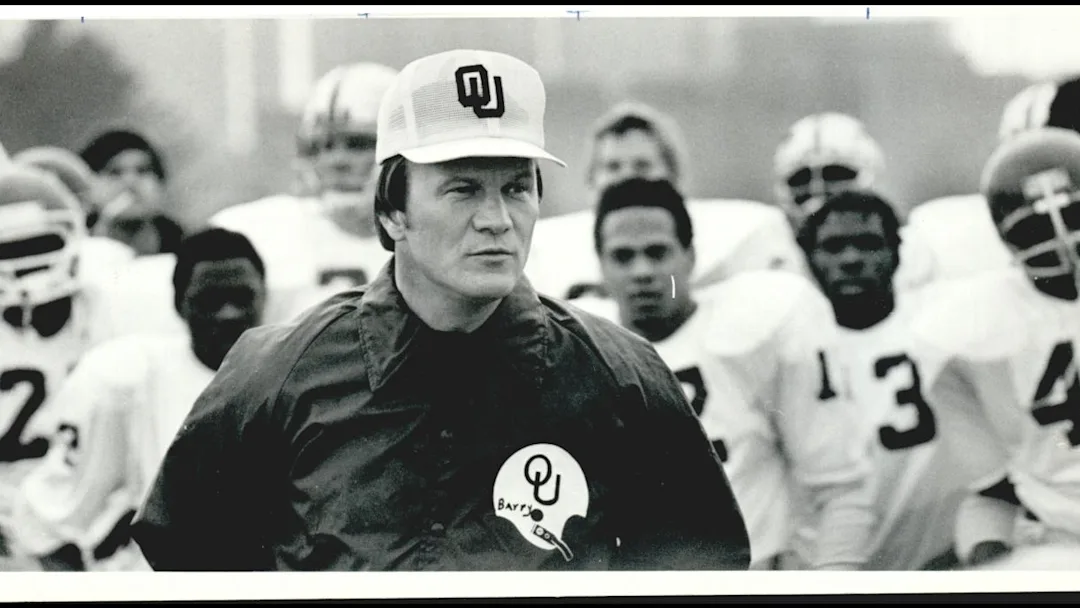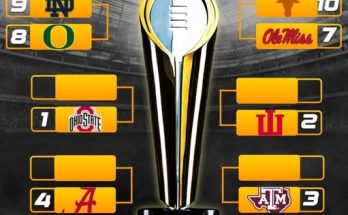In a sport defined by evolution, tradition, and relentless pursuit of excellence, college football has few names as synonymous with greatness as the University of Oklahoma. From the dust bowl grit of the 1940s to the offensive revolutions of the modern era, the Sooners have not just played the game—they’ve helped shape it. ESPN’s new documentary Wishbone doesn’t just tell the story of a formation or a playbook. It tells the story of a culture, a state, and a team that once defined college football’s past and may still hold the keys to its future. With sweeping visuals, candid interviews, and a reverence for history that never feels like nostalgia, Wishbone is more than a documentary—it’s a time machine, a love letter, and a master class in the art of football.
The title alone—Wishbone—carries weight. It evokes the offensive system that defined Oklahoma’s dominance through the 1970s and 1980s under legendary head coaches like Barry Switzer and Chuck Fairbanks. But what Wishbone quickly reveals is that the term is just as symbolic as it is schematic. The formation, with its triple-option unpredictability and need for cohesion and discipline, mirrors the very DNA of Oklahoma football: tough, unified, strategic, and deceptively explosive.
From the opening sequence, Wishbone sets a tone that’s both cinematic and intimate. Footage of fall Saturdays in Norman, black-and-white images of coaches diagramming plays, and roaring crowds inside the iconic Gaylord Family Oklahoma Memorial Stadium all build a visceral sense of place. There’s red dirt, rusted tractors, and boys tossing footballs on ranches, all serving as reminders that Oklahoma football is not just a program—it’s a birthright. And then the film dives deep into the heart of the story: how one offensive philosophy shaped decades of dominance and gave Oklahoma a cultural identity that lives on long after the formation itself faded from modern playbooks.
Through interviews with legends like Barry Switzer, Jamelle Holieway, and Thomas Lott, the documentary brings to life the golden era of the Wishbone offense. Switzer, never one to sugarcoat history, speaks with a mixture of swagger and wisdom, describing how the formation wasn’t just a tactic but a response—a weapon forged out of necessity. “It was war,” he says. “And the Wishbone was our nuclear option.” He recalls the moment in the early ‘70s when he realized the game was changing, and Oklahoma needed a new edge. That edge became the Wishbone, a triple-option system that put defenses in impossible positions and rewarded discipline, toughness, and speed.
What Wishbone does so well is not just explain the Xs and Os, but connect them to the people who executed them. The formation itself required quarterbacks who could take hits and make split-second reads, backs who could sacrifice personal glory for the good of the play, and linemen who could move as one organism. The documentary explores how this system didn’t just create winning football; it created a culture of accountability, humility, and grit. Players weren’t just athletes—they were soldiers in a cause bigger than themselves. The film profiles several key figures from this era, including Holieway, who famously became the first true freshman to lead his team to a national championship, and Lott, whose flair and toughness became symbolic of the Wishbone’s personality.
Archival footage of the 1974, 1975, and 1985 national championship seasons pulses with energy. Oklahoma’s offense looks as fast and physical today as it did decades ago. And while the game has changed, the underlying principles haven’t. “It wasn’t about tricking you,” former offensive lineman Greg Roberts explains in the film. “It was about breaking your will.”
The documentary is also deeply honest about the challenges and criticisms that came with the system. Some called the offense antiquated, a relic. But Wishbone shows how Oklahoma didn’t care about trends—they cared about results. The film addresses how the formation eventually lost ground to more pass-heavy systems, and how, in time, even Oklahoma evolved. But what remains clear throughout is that the spirit of the Wishbone—the unity, the toughness, the adaptability—never left the program.
One of the most compelling aspects of Wishbone is how it connects past to present. Through interviews with current head coach Brent Venables and recent players, the film explores how the principles instilled during the Wishbone years still influence the program’s values. Venables speaks reverently about the program’s history, saying, “You can’t wear that jersey if you don’t know what it means. And it means the Wishbone.” He draws a direct line from the triple-option plays of the past to the attitude and discipline he expects today. Even as the offense has evolved into more spread and RPO (run-pass option) looks, the commitment to physicality, precision, and team-first mentality remains unchanged.
Oklahoma’s recent journey—including the coaching transitions from Bob Stoops to Lincoln Riley to Venables—isn’t ignored. Instead, it’s framed as part of a larger legacy of adaptation. The film portrays Stoops as a modernizer who respected tradition while embracing innovation. Riley’s high-octane offenses are shown not as a betrayal of the Wishbone but as its spiritual successor—an explosive system rooted in discipline and structure. In this way, Wishbone suggests that Oklahoma’s real weapon is not any one offense, but the culture of excellence that has persisted regardless of formation.
There’s also a poignant human element to the film. Former players talk candidly about what playing in the Wishbone system did for them—not just on the field, but in life. “You had to learn to sacrifice,” says Kenny King. “You had to trust the guy next to you. That’s life, man. That’s not just football.” These reflections give the film a deeper emotional layer, reinforcing that the true legacy of the Wishbone isn’t measured in wins and losses, but in lives shaped, communities built, and standards set.
And while the film never leans too far into hagiography, it doesn’t shy away from celebrating Oklahoma’s place in college football history. With over 900 wins, seven national titles, and countless All-Americans, the Sooners are more than a blue blood—they’re a pillar. Wishbone shows how a seemingly simple offensive alignment came to embody everything that made Oklahoma not just good, but great. It was about more than football. It was about belief. Belief in preparation. Belief in your teammates. Belief in an identity forged on practice fields, in locker rooms, and under the bright lights of Saturday night football.
The cinematography and production quality of Wishbone are top-notch. Director Rory Karpf, known for The Book of Manning and The U, brings his signature mix of historical reverence and storytelling flair. He doesn’t just show games—he shows the stakes. He doesn’t just show stats—he shows hearts. The soundtrack pulses with classic Americana, blending with modern beats to create a timeless atmosphere. And the interviews, many shot in high-definition against the Oklahoma skyline, are intimate and raw.
In the end, Wishbone succeeds not because it makes you want to run the triple option again, but because it makes you understand why Oklahoma ran it in the first place. It was about finding an edge, building a family, and defining a standard. And even now, in an age of NIL deals, transfer portals, and super conferences, the essence of the Wishbone lives on—in practice drills, in locker room speeches, and in every Sooner who understands that putting on the crimson and cream means something more.
As the credits roll, one quote from Barry Switzer lingers in the mind: “We didn’t just run a system. We lived it.” That, more than anything, is what Wishbone is about. It’s about a system that demanded everything—and gave back even more. It’s about a state that found its pride in a team. And it’s about a program whose past continues to power its future.
ESPN’s Wishbone is a must-watch not just for Oklahoma fans, but for anyone who wants to understand how football becomes more than just a game. It becomes identity. It becomes legacy. It becomes DNA.



